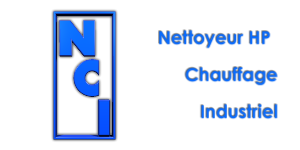Mastering Blog Articles: Essential SEO Strategies for 2025
The Role of Blog Articles in Modern Content Marketing
Blog articles remain a cornerstone of effective content marketing, serving as both educational resources and SEO powerhouses. By integrating SEO strategies into your blog content, you can attract organic traffic, establish authority, and engage your audience. Whether you’re promoting a product or sharing industry insights, high-quality blog articles help build trust and drive conversions. As digital landscapes evolve, adapting your content marketing approach ensures your blog stays relevant and impactful.
Key Elements of High-Quality Blog Articles
Creating compelling blog articles requires more than just writing; it demands strategic planning. Focus on clarity, originality, and value. Use engaging headlines, break up text with subheadings, and incorporate visuals to enhance readability. Ensure your content addresses audience pain points while aligning with broader SEO strategies. Consistency in tone and purpose keeps readers coming back, reinforcing your brand’s presence in content marketing efforts.
Keyword Research for Effective Blog Writing
Successful blog articles begin with thorough keyword research. Identify terms your target audience searches for using tools like Google Keyword Planner or SEMrush. Prioritize long-tail keywords that balance search volume with competition. Weave these keywords naturally into your content, ensuring they don’t disrupt the flow. This approach not only boosts SEO strategies but also improves user experience, making your blog more discoverable in content marketing campaigns.
Structuring Your Blog Article for Maximum Engagement
A well-structured blog article guides readers from introduction to conclusion seamlessly. Start with a hook to capture attention, then outline key points using subheadings. Use bullet points or numbered lists to simplify complex ideas. For instance, when discussing SEO strategies, break them into actionable steps. Incorporating internal links and external references, such as sticky bandits wild return, can add depth and credibility to your content.
SEO Tools to Enhance Your Blog Article Quality
- Use platforms like Ahrefs or Moz to analyze competitors’ content and identify gaps.
- Leverage Grammarly to refine grammar and readability before publishing.
- Track performance metrics with Google Analytics to refine future SEO strategies.
Best Practices for Optimizing Blog Articles
Optimization goes beyond keywords. Ensure your blog articles load quickly, use alt text for images, and maintain a mobile-friendly layout. Regularly update old posts to reflect new data or trends. Align your content with current SEO strategies to stay competitive in content marketing. Always prioritize user intent, crafting articles that answer questions or solve problems efficiently.
Measuring the Success of Your Blog Articles
Track metrics like bounce rate, time on page, and conversion rates to evaluate your blog’s impact. Tools like Hotjar can reveal how users interact with your content. Adjust your SEO strategies based on these insights, focusing on posts that drive engagement. Consistent analysis ensures your content marketing efforts yield measurable results.
Trends Shaping the Future of Blog Articles
Interactive elements, AI-generated content, and voice search optimization are redefining blog articles. Embrace video tutorials, quizzes, and podcasts to diversify your content marketing toolkit. Prioritize accessibility and inclusivity in your SEO strategies to reach wider audiences. Staying ahead of these trends ensures your blog remains a dynamic hub of information.
Common Mistakes to Avoid in Blog Writing
- Overstuffing content with keywords can harm readability and SEO rankings.
- Neglecting mobile optimization risks losing traffic from smartphone users.
- Failing to update outdated information undermines credibility in content marketing.
How to Repurpose Blog Articles for Maximum Reach
Extend the life of your blog articles by transforming them into social media posts, email newsletters, or infographics. Use snippets of content in webinars or presentations. This repurposing strategy amplifies your SEO efforts and reinforces your content marketing message across multiple channels.
Building Authority Through Consistent Blogging
Regularly publishing high-quality blog articles establishes your brand as an industry leader. Consistency in SEO strategies and content marketing builds trust with both search engines and readers. Over time, this authority translates to higher rankings, increased traffic, and stronger customer relationships.
Engaging Your Audience with Interactive Blog Features
Incorporate polls, comment sections, or downloadable resources to foster interaction. These features encourage repeat visits and improve user experience. Interactive content also aligns with modern SEO strategies, enhancing your blog’s visibility in content marketing initiatives.
The Importance of Mobile Optimization in Blog Articles
With over half of web traffic coming from mobile devices, optimizing blog articles for smaller screens is critical. Use responsive design, compress images, and ensure fast loading times. Mobile-friendly blogs not only rank better but also provide a seamless experience, boosting engagement and SEO effectiveness.
Updating Old Blog Articles for Continued Relevance
Refresh outdated blog articles with new data, correct errors, and align them with current SEO strategies. This practice keeps your content marketing efforts fresh and valuable. Updated posts also signal to search engines that your site is actively maintained, improving long-term visibility.
Creating a Blog Article Calendar for Sustained Growth
Plan your blog topics in advance using a calendar to maintain consistency. Align content with seasonal trends, industry events, or algorithm updates. A structured approach ensures your SEO strategies and content marketing goals remain aligned, driving steady growth and audience retention.
Posted in: Non classé
Leave a Comment (0) →